Ion Source Group
Brief Introduction
The Ion Source Group has been organized for more than 25 years at the Institute of Modern Physics, the Chinese Academy of Sciences. With 26 staff and about 10 graduate students, we are pioneering in the research of advanced ion sources. Based on the great success on ECR (Electron Cyclotron Resonance) ion source development, we are now developing advanced technologies and physics in next generation ECR ion source, intense beam ion sources, laser ion beam source, negative ion beam sources, low energy ion beam physics, and efficient acceleration of intense low energy ion beams. Large-scale science projects and ion application facilities will benefit from those research achievements.
Research Fields
1. Ion Sources
(1) ECR ion sources
We have developed high performance ECR ion sources from classical to fully superconducting ones that cover the operation frequency of 10~28 GHz. Fully superconducting ion sources such as SECRAL and SECRAL-II, are iconic high performance machines that represent the state of the art ECR ion sources, which have contributed enormously to the performance enhancement of HIRFL facility and the basic researches as well. Permanent magnet ECR ion sources, the successful LAPECR series, have been widely utilized for the applications of heavy ion beams, such as multi-disciplinary platforms, cancer treatment facilities and so on. Driven by many national projects and requirements from national institutions, the group is dedicated to developing high performance ECR ion sources, key technologies as well as highly charged ECR plasma physics. The world first fourth generation ECR ion source FECR is now under development at IMP, which will challenge the limits of Nb3Sn magnet and 45 GHz microwave plasma heating for highly charged heavy ion beams production. FECR is one of the key machines of HIAF facility.
(2) Intense 2.45 GHz microwave ion source
Several high current 2.45 GHz microwave ion sources have been developed at IMP for versatile purposes, i.e. the C-ADS project injector, the CPHS project in Tsinghua University, the CMIF project at IMP, 39Ar enrichment and so on, which can provide stable ion beams of H+ or H2+ from several emA to 100 emA in both pulsed and dc modes. The Group is now focusing on the development of very compact structure sources of several cm in dimension, very powerful sources of >100 emA CW in intensity of ion beams from elements other than hydrogen, and their applications.
(3) Laser ion source and Intense beam acceleration
Laser ion sources have been being developed from 2006. With the efforts of decades, a variety of highly charged heavy ion beams, such as C5+-6+, Al9+-13+, Ti16+-20+, Ni18+-23+, Ag16+-25+, have been produced from a laser ion source equipped with commercial Nd: YAG lasers those can provide good performance for a reasonable price. The long-term stability of the laser ion source, which is of importance for applications, has been demonstrated by the IMP laser ion source. The Direct Plasma Injection Scheme- DPIS, in which a laser ion source is connected with an RFQ linac directly to take full advantage of the short-pulsed ion beams with very high intensity produce by a laser ion source, has also been studied. Based on DPIS, the C6+ beams produced by the laser ion source was accelerated by an RFQ to the energy of 7.12 MeV in the distance of 2 meters.
(4) Negative ion source and application
Since 2010, several negative ion sources have been developed at Institute of Modern Physics to provide stable DC ion beams of H-, O-, and O2- with beam intensity from hundreds of μA to several mA. These negative ion sources can be used for proton therapy facilities, secondary ion mass spectrometry and so on.
2. Experimental Platforms
(1) Low Energy Highly-Charged Ion Accelerator Facility
Nuclear science is a complex field that requires intensive study, and Low Energy Highly-Charged Ion Accelerator Facility (LEAF) was thus financing from national major scientific instruments and equipment development project and undertaken by IMP to provide a unique experimental platform. LEAF can produce highly-charged heavy ion beams of several hundred milliamperes and extend the energy range of 0.1 MeV-100 MeV for nuclear structure studies, involving Ion interaction under extreme conditions, quantum dynamics of few-body interactions in strong coulomb field, the nuclear process and the origin of heavy elements in universe evolution, as well as simulations of high-energy radiation damage in nuclear materials. In addition to producing highly-charged heavy ion beams, LEAF is designed to deliver a continuous high intensity highly-charged ion beam (e.g. Bi55+, U50+…) and a wide spectrum of high intensity cocktail beam (e.g. H2+ + He2+ + 58Ni28+…), used for testing atomic displacement damage under intense beam irradiation, and also for exploring the synergy between hydrogen and helium ions, so as to bring us discoveries and breakthroughs in science. LEAF’s research program will provide important model references for further front end construction of a new program HIAF, and will be the basis for the next generation high power heavy-ion LINACS.
LEAF platform provides technical assistance and experimental support for many research projects from National?Program?on?Key?Basic?Research?Project and National?Natural?Science?Foundation.

(2) Main Experiment Hall
The main experiment hall is located in Building 2 of IMP, and equipped with a number of experimental platforms, including research platform for application, test platform for ion source key technology, research platform for ion source/ion beam physics and experiment platform for atomic physics/materials, and research involves negative ion source, permanent magnet ion sources, highly charged ion beam production at room temperature, intense proton source and isotope enrichment. These experimental platforms provide technical assistance and experimental support for many research projects from The 13th Five-Year Science and Technology Innovation Plan, National?Program?on?Key?Basic?Research?Project, National?Natural?Science?Foundation, the CAS Key Research Program of Frontier Sciences and so on.
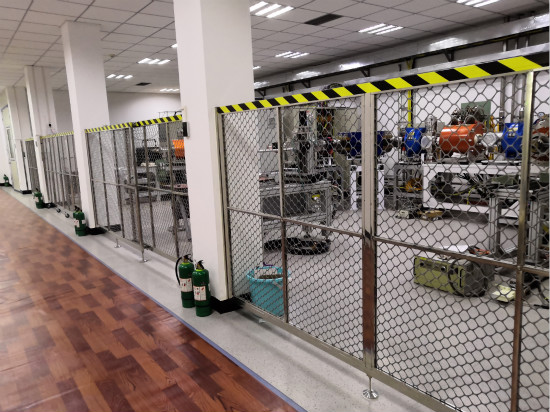
(3) Experiment Hall for Laser Ion Source and Accelerator
The laser ion source has the characteristics of high intensity (tens to hundreds of milliamps) and short pulse (nanoseconds to tens of nanoseconds), and is the highest brightness ion source. At the same time, it also has incomparable advantages in producing ion beams of refractory elements.
A compact injector based on a laser ion source and Direct Plasma Injection Scheme (DPIS) can meet the requirement of a single-turn single-circle injection mode of the synchrotron, which is of great significance to develop a new technical route for a compact, lower cost heavy ion therapy facility.
The laser ion source research platform is supported by the National Natural Science Funds for Excellent Young Scholars and the Key Frontier Scientific Research Project of the Chinese Academy of Sciences.
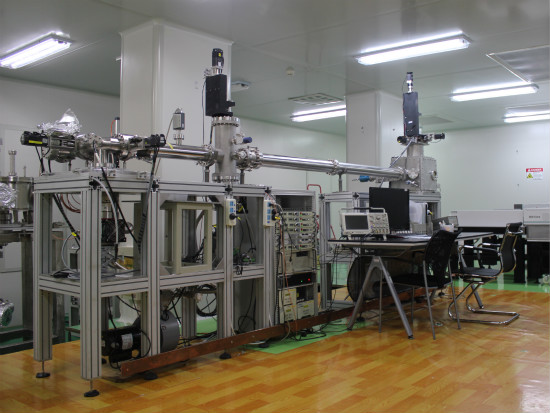
Achievements
Publications
1. Y. Yang, Y. H. Zhai, P. Y. Jiang, L. T. Sun, L. Lu, et al., Commissioning progress of LEAF at IMP, Journal of Physics: Conference Series, 2020, 1401, 012019
2. Y. G. Liu, J. L. Liu, Q. Wu and L. T. Sun, Ion beam production with an antenna type 2.45 GHz electron cyclotron resonance ion source, Review of Scientific Instruments, 2020, 91(2), 023301
3. J. Q. Li, L. T. Sun, Y. Yang, Y. Cao, X. Z. Zhang, et al., Development of an all permanent magnet ECR ion source for low and medium charge state ions production, Journal of Physics: Conference Series, 2020, 1401, 012022
4. J. Q. Li, Y. Cao, L. T. Sun, X. Z. Zhang, J. W. Guo, et al., Intense carbon beams production with an all permanent magnet electron cyclotron resonance ion source for heavy ion medical machine, Review of Scientific Instruments, 2020, 91(1), 013307
5. Z. H. Jia, A. L. Tong, L. T. Sun, Y. G. Liu, J. L. Liu, et al., An electromagnetic separation system for the enrichment of 39Ar, Review of Scientific Instruments, 2020, 91(3), 033309
6. J. W. Guo, L. Sun, W. Lu, W. H. Zhang, Y. C. Feng, et al., A new microwave coupling scheme for high intensity highly charged ion beam production by high power 24–28 GHz SECRAL ion source, Review of Scientific Instruments, 2020, 91(1), 013322
7. X. Fang, L. T. Sun, Y. J. Yuan, Y. Yang, C. Qian, et al., Development of a Pepper Pot probe to measure the Four-dimensional emittance of low energy beam of electron cyclotron resonance ion source at IMP, Journal of Physics: Conference Series, 2020, 1401, 012023
8. X. Fang, L. T. Sun, Y. J. Yuan, C. Qian, Y. Yang, et al., Emittance study of the high intensity highly charged heavy ion beams extracted from electron cyclotron resonance ion source, Review of Scientific Instruments, 2020, 91(1), 013317
9. Y. Yang, L. T. Sun, Y. H. Zhai, Y. J. Zhai, Z. Shen, et al., Heavy ion accelerator facility front end design and commissioning, Physical Review Accelerators and Beams, 2019, 22(11), 110101
10. Q. Wu, Y. G. Liu, J. L. Liu, H. Y. Ma, J. Q. Wu, et al., Development of 2.45 GHz ECR ion sources at IMP, Journal of Instrumentation, 2019, 14(02), C02009-C02009
11. G. C. Wang, H. Y. Zhao, Q. Y. Jin, J. J. Zhang, L. T. Sun, et al., Laser ablation plasma with solenoid field confinement, Review of Scientific Instruments, 2019, 90(11), 113302
12. Q. Y. Jin, Y. Zhou, L. T. Sun, Y. G. Liu, X. Z. Zhang, et al., Production of O? and O2? beams with the negative ion source at Institute of Modern Physics, Review of Scientific Instruments, 2019, 90(11), 113317
13. X. Fang, L. T. Sun, Y. J. Yuan, C. Qian, R. F. Chen, et al., Development of a Four-dimensional Emittance Meter for the Diagnostics of High Intensity Highly Charged Ion Beam From an Electron Cyclotron Resonance Ion Source, Nuclear Physics Review, 2019, 36(3), 313-321
14. H. W. Zhao, L. T. Sun, J. W. Guo, W. H. Zhang, W. Lu, et al., Superconducting ECR ion source: From 24-28 GHz SECRAL to 45 GHz fourth generation ECR, Review of Scientific Instruments, 2018, 89(5), 052301
15. Q. Wu, J. L. Liu, H. Y. Ma, Y. G. Liu, Z. H. Jia, et al., Status of high intensity low energy injector for Jinping underground nuclear astrophysics experiments, AIP Conference Proceedings, 2018, 2011, 080009
16. L. Sun, W. Lu, E. Mei, G. Sabbi, W. Wu, et al., Superconducting Magnets for High Performance ECR Ion Sources, IEEE Transactions on Applied Superconductivity, 2018, 28(3), 4101606
17. L. Sun, J. W. Guo, Z. S. , W. H. Zhang, X. Z. Zhang, et al., Technical approaches towards intense high charge state ion beam production with superconducting ECRIS, AIP Conference Proceedings, 2018, 2011, 040022
18. E. Ravaioli, A. R. Hafalia, M. Juchno, W. Lu, G. Sabbi, et al., Quench Protection of a Nb3Sn Superconducting Magnet System for a 45-GHz ECR Ion Source, IEEE Transactions on Applied Superconductivity, 2018, 28(3), 4700906
19. W. Ma, L. Lu, T. Liu, L. Shi, L. Sun, et al., Frequency and fields tuning of a heavy ion radio-frequency quadrupole accelerator, Nuclear Instruments & Methods in Physics Research Section a-Accelerators Spectrometers Detectors and Associated Equipment, 2018, 901(180-188
20. M. Juchno, A. Hafalia, W. Lu, E. Ravaioli, G. L. Sabbi, et al., Mechanical Design of a Nb3Sn Superconducting Magnet System for a 45 GHz ECR Ion Source, IEEE Transactions on Applied Superconductivity, 2018, 28(3), 4602806
21. W. Huang, C. Qian, L. Sun, X. Zhang, Y. Cao, et al., Design of high temperature oven for refractory metallic ion beam production in high charge state ECR ion source, Nuclear Techniques, 2018, 41(7), 070501-1-070501-7
22. T. Huang, Q. Wu, Y. Yang, J. Liu, X. Fang, et al., Low Energy Beam Transport of High Current Proton Beam with Quality Analysis System, Nuclear Physics Review, 2018, 35(1), 40-45
23. J. W. Guo, L. Sun, X. J. Niu, J. W. Liu, X. Z. Zhang, et al., 45?GHz microwave power transmission and coupling scheme study with superconducting ECR ion source at IMP, AIP Conference Proceedings, 2018, 2011, 090001
24. H. W. Zhao, L. T. Sun, J. W. Guo, W. Lu, D. Z. Xie, et al., Intense highly charged ion beam production and operation with a superconducting electron cyclotron resonance ion source, Physical Review Accelerators and Beams, 2017, 20(9), 094801-1-094801-27
25. L. Sun, H. W. Zhao and J. W. Guo, Gyrotron frequency ECRIS development and the future challenges, 10th International Workshop 2017 Strong Microwaves and Terahertz Waves: Sources and Applications, 2017, 149, 02005
26. W. Ma, L. Lu, X. Xu, L. Sun, Z. Zhang, et al., Design of an 81.25 MHz continuous-wave radio-frequency quadrupole accelerator for Low Energy Accelerator Facility, Nuclear Instruments & Methods in Physics Research Section a-Accelerators Spectrometers Detectors and Associated Equipment, 2017, 847(130-135
27. W. Ma, L. Lu, T. Liu, X. Xu, L. Sun, et al., Three-dimensional multi-physics analysis and commissioning frequency tuning strategy of a radio-frequency quadrupole accelerator, Nuclear Instruments & Methods in Physics Research Section a-Accelerators Spectrometers Detectors and Associated Equipment, 2017, 866(190-195
28. H. Y. Zhao, J. J. Zhang, Q. Y. Jin, W. Liu, G. C. Wang, et al., New development of laser ion source for highly charged ion beam production at Institute of Modern Physics (invited), Review of Scientific Instruments, 2016, 87(2), 02A917
29. Y. Yang, W. P. Dou, L. T. Sun, Q. G. Yao, Z. M. Zhang, et al., Simulation study of LEBT for transversely coupled beam from an ECR ion source, Review of Scientific Instruments, 2016, 87(2), 02B910
30. Q. Wu, L. T. Sun, B. Q. Cui, G. Lian, Y. Yang, et al., Design of an intense ion source and LEBT for Jinping Underground Nuclear Astrophysics experiments, Nuclear Instruments & Methods in Physics Research Section a-Accelerators Spectrometers Detectors and Associated Equipment, 2016, 830(214-218
31. Q. Wu, H. Y. Ma, Y. Yang, L. T. Sun, X. Z. Zhang, et al., Status of intense permanent magnet proton source for China-accelerator driven sub-critical system Linac, Review of Scientific Instruments, 2016, 87(2), 02B903
32. L. Sun, J. W. Guo, W. Lu, W. H. Zhang, Y. C. Feng, et al., Advancement of highly charged ion beam production by superconducting ECR ion source SECRAL (invited), Review of Scientific Instruments, 2016, 87(2), 02A707
33. W. Lu, C. Qian, L. T. Sun, X. Z. Zhang, X. Fang, et al., High intensity high charge state ion beam production with an evaporative cooling magnet ECRIS, Review of Scientific Instruments, 2016, 87(2), 02A738
34. J. W. Guo, L. Sun, X. J. Niu, X. Z. Zhang, W. Lu, et al., 24 GHz microwave mode converter optimized for superconducting ECR ion source SECRAL, Review of Scientific Instruments, 2016, 87(2), 02A708
35. W. H. Zhang, Q. Wu, H. Y. Ma, J. W. Guo, C. Qian, et al., Development and Commissioning of 14 GHz Intensity Proton Source, Atomic Energy Science and Technology Suppl., 2015, 49(6-8
36. W. Lu, L. T. Sun, C. Qian, J. W. Guo, X. Fang, et al., The development of a room temperature electron cyclotron resonance ion source (Lanzhou electron cyclotron resonance ion source No. 4) with evaporative cooling technology at Institute of Modern Physics, Review of Scientific Instruments, 2015, 86(4), 043301
37. H. Y. Zhao, Q. Y. Jin, S. Sha, J. J. Zhang, Z. M. Li, et al., The study towards high intensity high charge state laser ion sources, Review of Scientific Instruments, 2014, 85(2), 02B910
38. Y. Yang, Y. J. Yuan, L. T. Sun, Y. C. Feng, X. Fang, et al., Transverse coupling property of beam from ECR ion sources, Review of Scientific Instruments, 2014, 85(11), 113305
39. Y. Yang, L. T. Sun, Q. Hu, Y. Cao, W. Lu, et al., Studies on low energy beam transport for high intensity high charged ions at IMP, Review of Scientific Instruments, 2014, 85(2), 02A719
40. Y. Yang, L. T. Sun, Y. C. Feng, X. Fang, W. Lu, et al., Studies on a Q/A selector for the SECRAL electron cyclotron resonance ion source, Review of Scientific Instruments, 2014, 85(8), 083301
41. Q. Wu, Z. M. Zhang, L. T. Sun, Y. Yang, H. Y. Ma, et al., A 2.45 GHz intense proton source and low energy beam transport system for China Initiative Accelerator Driven Sub-Critical reactor system, Review of Scientific Instruments, 2014, 85(2), 02A703
42. L. Sun, W. Lu, Y. C. Feng, W. H. Zhang, X. Z. Zhang, et al., Progress of superconducting electron cyclotron resonance ion sources at Institute of Modern Physics (IMP), Review of Scientific Instruments, 2014, 85(2), 02A942
43. W. Lu, B. Xiong, X. Z. Zhang, L. T. Sun, Y. C. Feng, et al., Progress of a room temperature electron cyclotron resonance ion source using evaporative cooling technology at Institute of Modern Physics, Review of Scientific Instruments, 2014, 85(2), 02A926
44. S. H. Lin, X. Fang, H. J. Zhang, C. Qian, B. H. Ma, et al., Study on a negative hydrogen ion source with hot cathode arc discharge, Review of Scientific Instruments, 2014, 85(2), 02B120
45. Q. Y. Jin, H. Y. Zhao, J. J. Zhang, S. Sha, Z. L. Zhang, et al., Simulation of direct plasma injection for laser ion beam acceleration with a radio frequency quadrupole, Review of Scientific Instruments, 2014, 85(7), 073304
46. Q. Y. Jin, H. Y. Zhao, S. Sha, J. J. Zhang, Z. M. Li, et al., Study on space charge effect in an electrostatic ion analyzer applied to measure laser produced ions, Review of Scientific Instruments, 2014, 85(3), 033307
47. W. Lu, D. Z. Xie, X. Z. Zhang, B. Xiong, L. Ruan, et al., Development of DRAGON electron cyclotron resonance ion source at Institute of Modern Physics, Review of Scientific Instruments, 2012, 83(2), 02A328
48. L. T. Sun, H. W. Zhao, W. Lu, X. Z. Zhang, Y. C. Feng, et al., Production of highly charged ion beams with SECRAL, Review of Scientific Instruments, 2010, 81(2), 02A318
Photos
Contact
CHEN Chinwen
Tel: +86-18693087016
Email: chinwen@impcas.ac.cn
Mailing Address:
Box 2, Institute of Modern Physics, CAS
509 Nanchang Road, Lanzhou, 730000, China


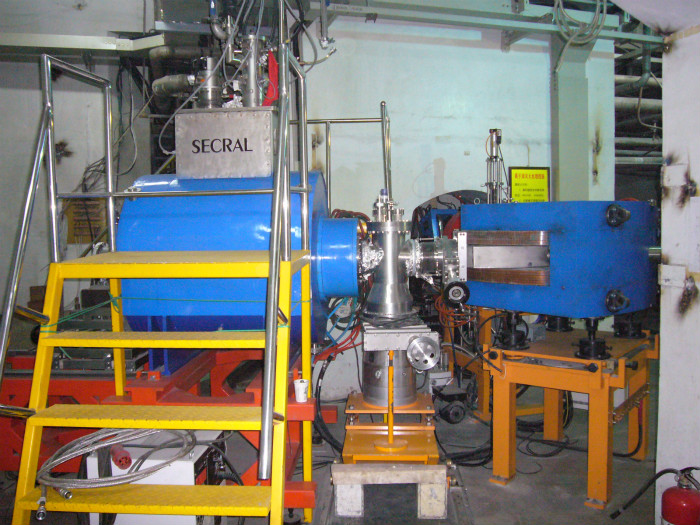
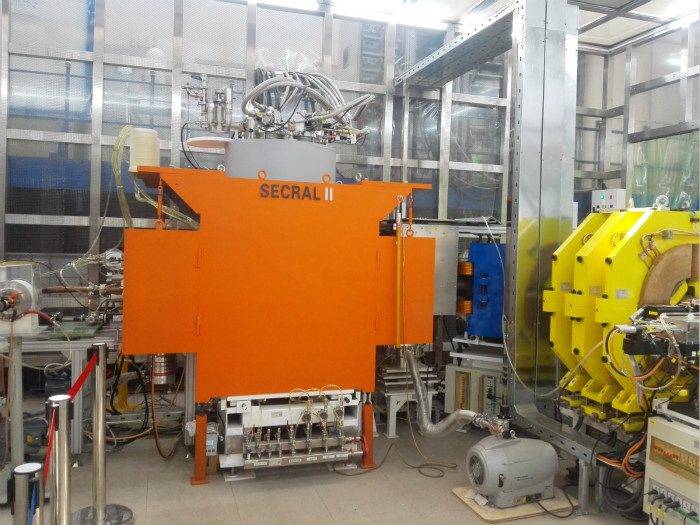

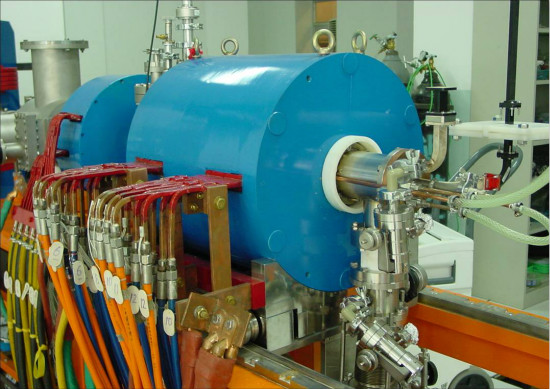

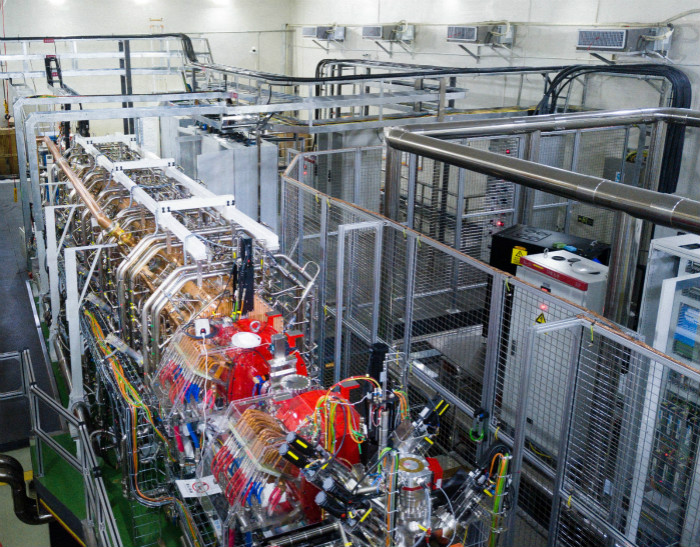

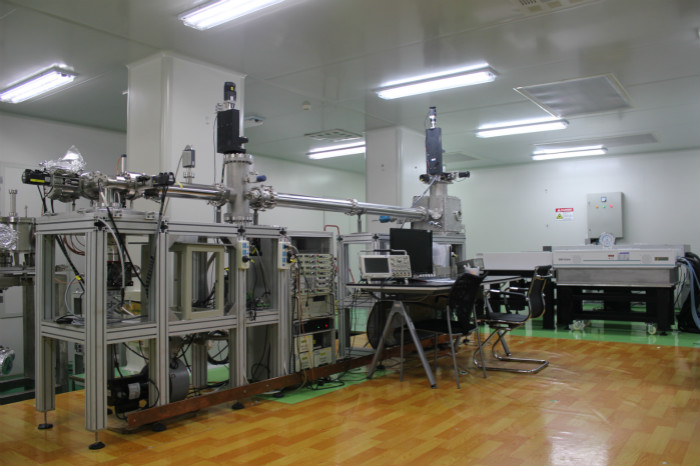

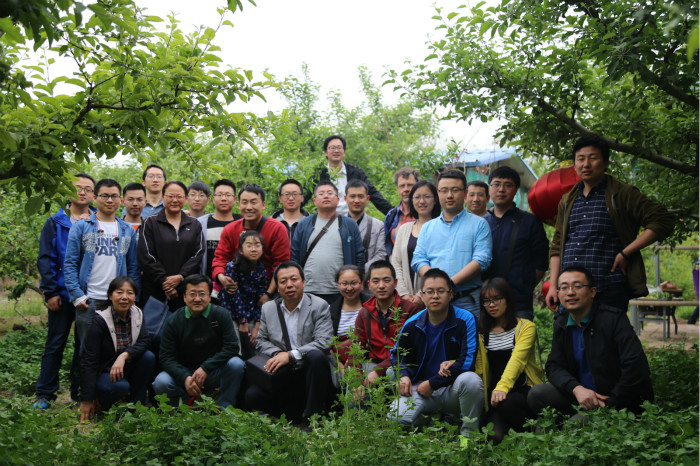
 甘公网安备 62010202000713号
甘公网安备 62010202000713号


